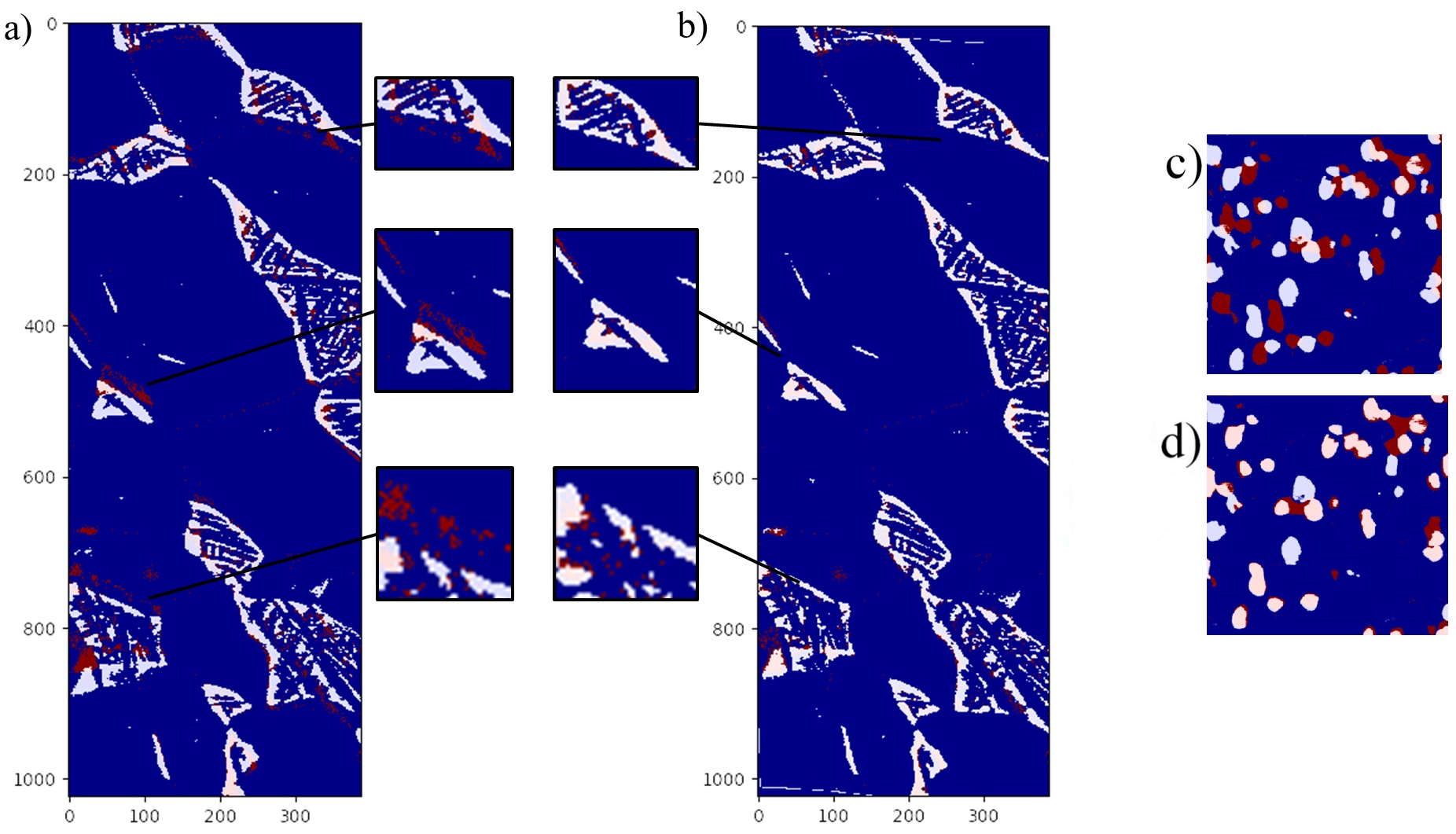Correction of Electron Back-scattered Diffraction datasets using an evolutionary algorithm
In materials science and particularly electron microscopy, Electron Back-scatter Diffraction (EBSD) is a common and powerful mapping technique for collecting local crystallographic data at the sub-micron scale. The quality of the reconstruction of the maps is critical to study the spatial distribution of phases and crystallographic orientation relationships between phases, a key interest in materials science. However, EBSD data is known to suffer from distortions that arise from several instrument and detector artifacts. In this paper, we present an unsupervised method that corrects those distortions, and enables or enhances phase differentiation in EBSD data. The method uses a segmented electron image of the phases of interest (laths, precipitates, voids, inclusions) gathered using detectors that generate less distorted data, of the same area than the EBSD map, and then searches for the best transformation to correct the distortions of the initial EBSD data. To do so, the Covariance Matrix Adaptation Evolution Strategy (CMA-ES) is implemented to distort the EBSD until it matches the reference electron image. Fast and versatile, this method does not require any human annotation and can be applied to large datasets and wide areas, where the distortions are important. Besides, this method requires very little assumption concerning the shape of the distortion function. Some application examples in multiphase materials with feature sizes down to 1 $\mu$m are presented, including a Titanium alloy and a Nickel-base superalloy.
PDF Abstract